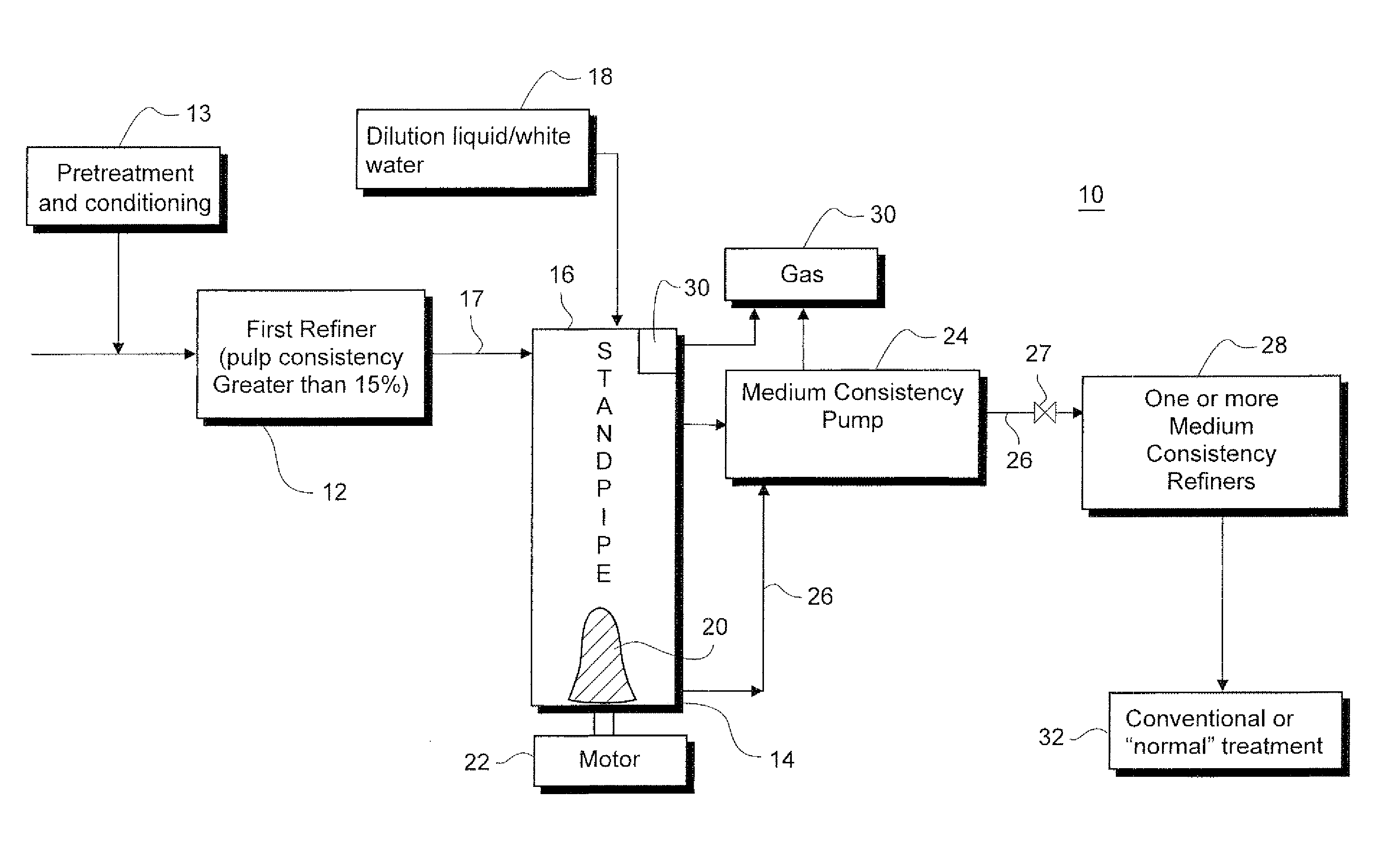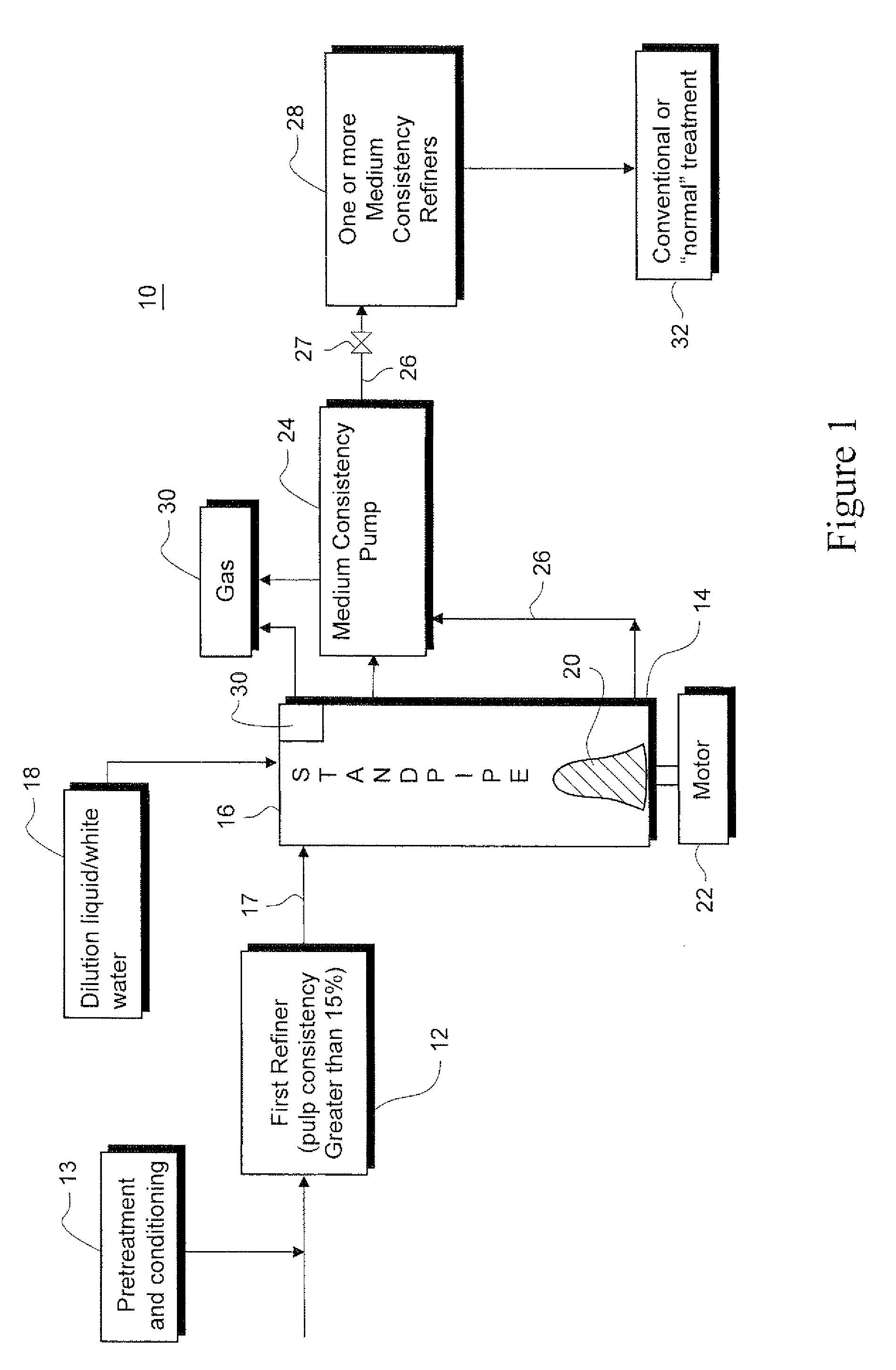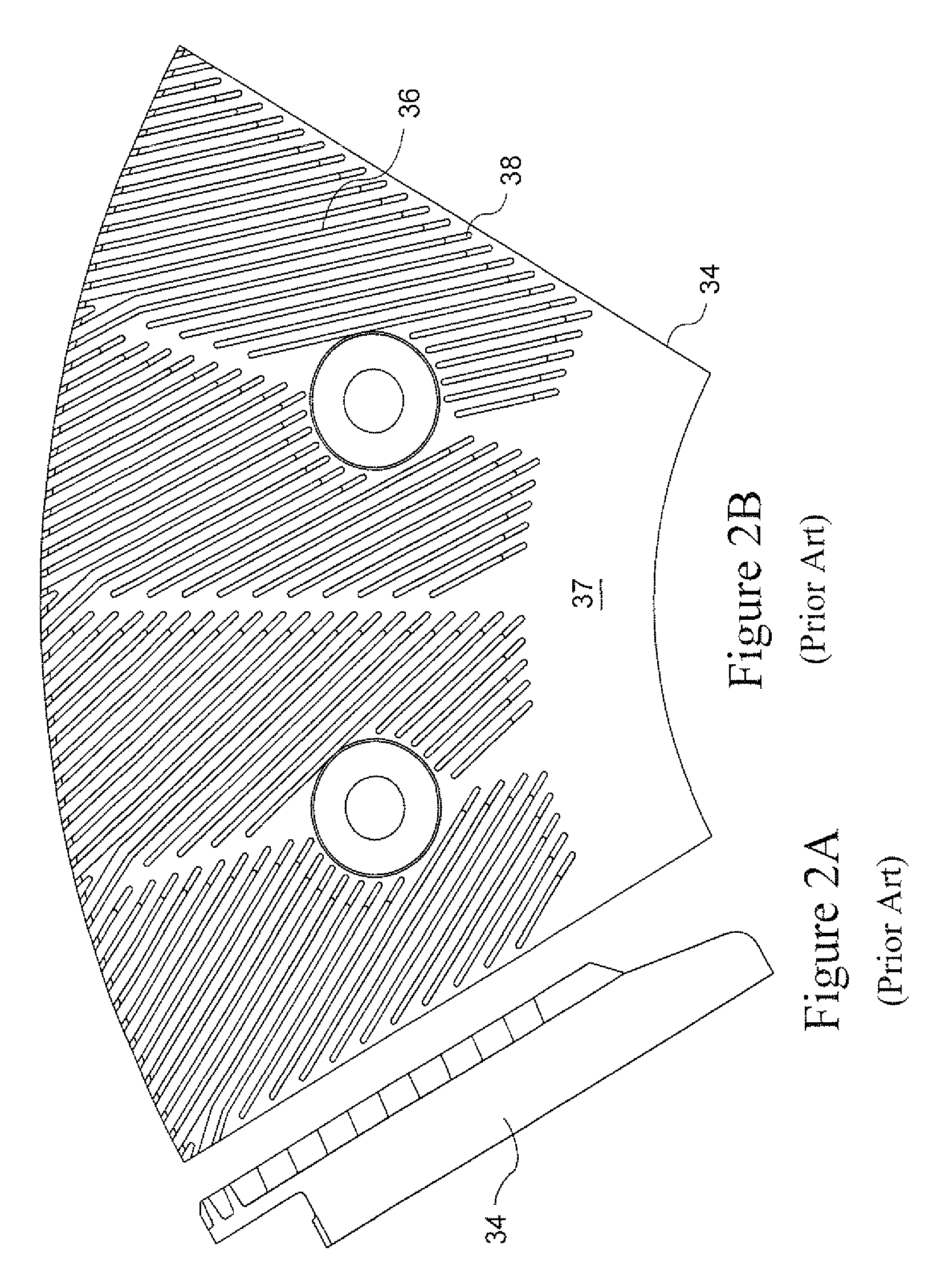Medium consistency refining method of pulp and system
a refining method and medium consistency technology, applied in the field of refining lignocellulosic fibrous materials, can solve the problems of limiting the total energy that can be applied in the refining zone of a lcr, large amount of energy that is not applied directly to refining pulp, and large amount of energy that is not applied to mechanical refining pulp, so as to improve the quality of pulp development, reduce the complexity and cost of mechanical equipment, and less energy consumption
- Summary
- Abstract
- Description
- Claims
- Application Information
AI Technical Summary
Benefits of technology
Problems solved by technology
Method used
Image
Examples
Embodiment Construction
[0024]FIG. 1 represents an exemplary mill operation 10 for processing comminuted cellulosic material 11, such as wood chips pre-conditioned wood fibers and destructured chips. The mill operation includes a conventional primary refiner stage 12 and a second refiner stage 28. The secondary refiner stage includes at least one medium consistency refiner. The primary stage refiner stage 12 may be a conventional high consistency pressurized refiner, such as a high speed pressurized refiner having opposing rotor and stator refiner discs that process wood chip, destructured chips, or other comminuted fiberized cellulosic material having a consistency of at least 20 percent (%) and preferably greater than 30%. The primary refining stage 12 may be associated with or without chemical pretreatment or conditioning 13, such as pretreatment and conditioning with alkaline, alkaline peroxide, and bio-agents, of lignocellulosic fibrous material, which may include hardwood, softwood, and non-wood cell...
PUM
| Property | Measurement | Unit |
|---|---|---|
| height | aaaaa | aaaaa |
| width | aaaaa | aaaaa |
| width | aaaaa | aaaaa |
Abstract
Description
Claims
Application Information
 Login to View More
Login to View More - R&D
- Intellectual Property
- Life Sciences
- Materials
- Tech Scout
- Unparalleled Data Quality
- Higher Quality Content
- 60% Fewer Hallucinations
Browse by: Latest US Patents, China's latest patents, Technical Efficacy Thesaurus, Application Domain, Technology Topic, Popular Technical Reports.
© 2025 PatSnap. All rights reserved.Legal|Privacy policy|Modern Slavery Act Transparency Statement|Sitemap|About US| Contact US: help@patsnap.com



